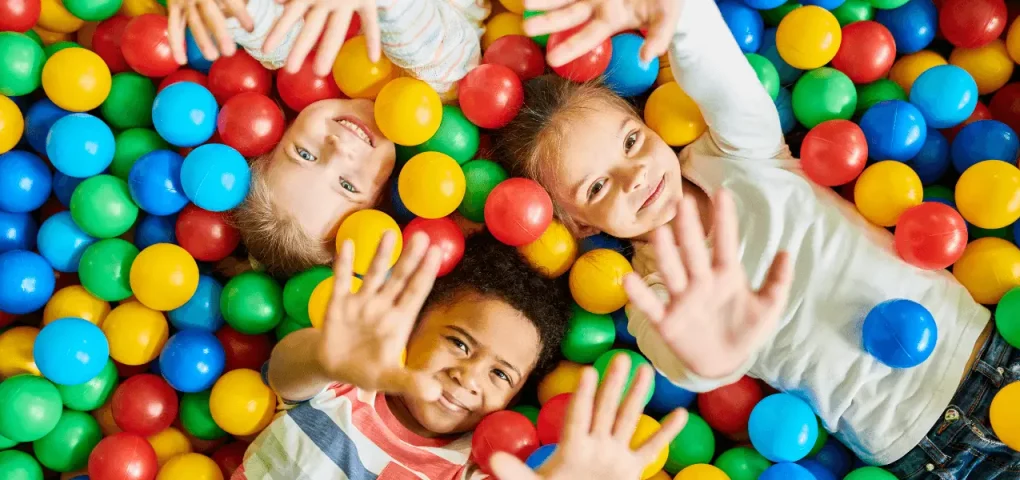
A few months ago, a documentary called “14 Peaks” was released on Netflix. It shows in detail the lengths Nirmal Purjal went to as he attempted to climb 14 of the world’s highest mountains in less than a year.
Any other mountaineer would have balked at the idea of undertaking such a monumental task.
However, Purjal, who goes by Nims, not only reached his goal, but along the way, he had refused to leave behind a fellow mountaineer who was in trouble.
He was able to rally a group of defeated mountaineers at the base camp of K2 to give another attempt in reaching the summit by blazing a trail for everyone else to follow.
If grit had a face, Nims would be it.
In this article, we’ll discuss what a grit and growth mindset is and how you can instill that in your children.
What is grit?

Grit refers to a personality trait that is demonstrated through passion and perseverance toward a goal despite the fact that obstacles and distractions are confronting a person in life.
According to grit theory, a sense of determination should be coupled with sustained passion and effort to attain success.
So why is grit important?
During the past two years, we all have been going through a series of misfortunes. Emerging variants of COVID-19 and periodical lockdowns, growing rates of unemployment, and political unrest have slowly pushed us to the edges of our sanity.
If the past years have been overwhelming for us, it may be more overwhelming for children who have limited understanding and even less control of their situation.
With these seemingly insurmountable odds, having a grit mindset has proved to help a majority of us to keep going.
Unarguably, it is something that we need to develop in our children. We can do that by instilling in them a can-do attitude or what is known in the academic world as the growth mindset.
What is the growth mindset?
A mindset refers to a person’s belief about their abilities. Grit is connected to two mindsets: fixed and growth mindset. But what is the difference between a fixed mindset and a growth mindset?
Having a fixed mindset means a person believes that their abilities are inborn. For example, this person might believe that they got a good grade in a math test because they are born with mathematical abilities.
On the opposite end, a person with a growth mindset believes that abilities can be developed by whatever means necessary. They are more likely resilient and have more grit.
For example, this person might believe that they got good grades through studying hard and asking for help. They believe that a person’s ability can be changed and improved through learning and perseverance.
What role does grit play in the growth mindset?

A growth mindset is related to grit. How so? Let’s put things into perspective.
Grit can be used in relation to your child’s ability to persist after setbacks. If your kid believes that their failures are because of their inborn traits, they will feel that there is no reason to try again.
The concept of grit plays into the question of nature and nurture. People need to cultivate a growth mindset to develop grit.
However, as a parent, if you instill in them the idea that they can achieve success through hard work and perseverance, then they will keep trying.
They will exhibit more resilience and grit to fulfill their long-term goals. Research from a recent study also shows that grit relates to academic success in students.
As a parent, how do you go about fostering a grit and growth mindset? Here are some tips to develop a grit and growth mindset in your kids.
How do you instill a growth mindset in your child?
Tip #1 Set the tone.

Failure is the perfect opportunity to teach resilience. As grown-ups, we know how hard it is to try something new when you are afraid to fail. Teach your kids to engage setbacks in a matter-of-fact way and that it is okay to be wrong or to make mistakes.
For example, “ Oh, you didn’t finish your project. This is a good reminder for us to be conscious of managing our time wisely.” There is no place for anger, shaming, and guilt-tripping here.
Set your child’s mind to see potential and room for growth. Given the right circumstances, growth mindset interventions can sometimes be helpful to develop grit.
Tip #2 Utilize praise properly.
The manner in which you praise your children would have an impact on how they see failure. It was always assumed that all praise is good for students, especially for any academic achievement.
Research showed that the way of praising the child has a direct impact on their ability to solve problems. Children who receive praise for their traits tend to make successful performance their primary goal. In comparison, children who are praised for their efforts are likely to problem-solve and attain to master capabilities they are learning.
They will seek out challenges to fuel their passion and would want to learn more. There is a big difference between, “Wow! you are so good at singing” as compared to “Wow, you practiced a lot with this!”
The research also shows that specific praise about effort predicted the emergence of a growth mindset in children. Practice saying, “ You are focused on getting this done. That’s amazing.”
Tip #3 Teach problem-solving without knowing what the solution is.
Advanced mathematical problems often have several steps for these to be solved. These are perfect examples of an opportunity to practice rational and analytical abilities.
When your child encounters a problem they can’t solve, encourage your child to try to work their way through it instead of immediately asking for help from their teacher or someone else. It will teach them to try different ways to solve the problem.
The first steps are the most important steps to achieve success.
Tip #4 Teach children how to talk about mistakes.

This is the part where you talk about what your kids could have done differently, what details they had missed out on, building confidence to discuss what did not work, and other approaches that could work.
It is a process that allows the child to identify what approaches they have already tried but didn’t work to try again and find out what does. It will also help them develop collaboration skills which will be of value as they age into adulthood.
A Final Note
Remember to leave some room for improvement. You won’t be able to apply the growth mindset 100% of the time. The growth mindset is like having a bird’s eye view of learning how to get over challenges and solve difficult problems.
An important aspect to remember is that these two traits: grit and growth, change over time as kids age.
It is unrealistic to expect that you will be able to apply it 100% of the time. Don’t be so hard on yourself if you find yourself slipping back into old habits of saying things that aren’t part of the “never give up and always work hard” point of view. We are all imperfect.
Just do your best in applying this mindset in your own life, and pretty soon, you’ll be seeing your kids closely follow. Remind them to keep trying and resilience is important to reach their long-term goals.
As Nims Purjal says, “Giving up is not in the blood.” It doesn’t matter how old your kids are, even if they’re primary or middle school students.
There is hope that they will eventually be able to apply it in their own lives. But it’s best to start early and teach your kids the importance of developing grit, resilience, and growth mindsets.
As a parent, you can share a personal story about being in a difficult situation, and you had to ask for help or use hard work to overcome a challenge. Ask your kids to share the same experiences they’ve had.
Practice switching from fixed to a growth mindset, discuss how feelings such as satisfaction, contentment, and happiness come from persevering through challenges and not giving up when it’s difficult. Share feelings such as sadness, anxiety, or hopelessness when negative things happen.
These are all perfectly normal.
Note that brain exercises can be a difficult task for kids. When you see your kids struggle and become frustrated, let them know it’s okay to take a break.
Their brains need to rest from learning or any academic work. Just assure them that we’ll come back to this tomorrow.”
After all, having a good support system can fuel a person’s grit.
———-
Enjoyed this article? Share it with the other mommas out there too! And don’t forget to check out our other posts on the blog.


Leave a Reply